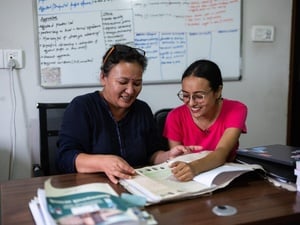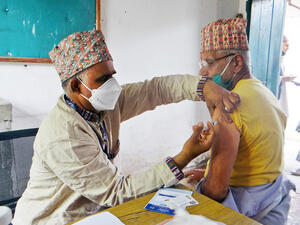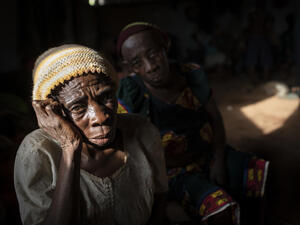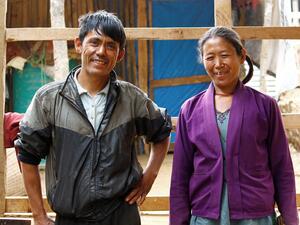Fires leave some 5,000 refugees homeless in camps in Nepal
Fires leave some 5,000 refugees homeless in camps in Nepal
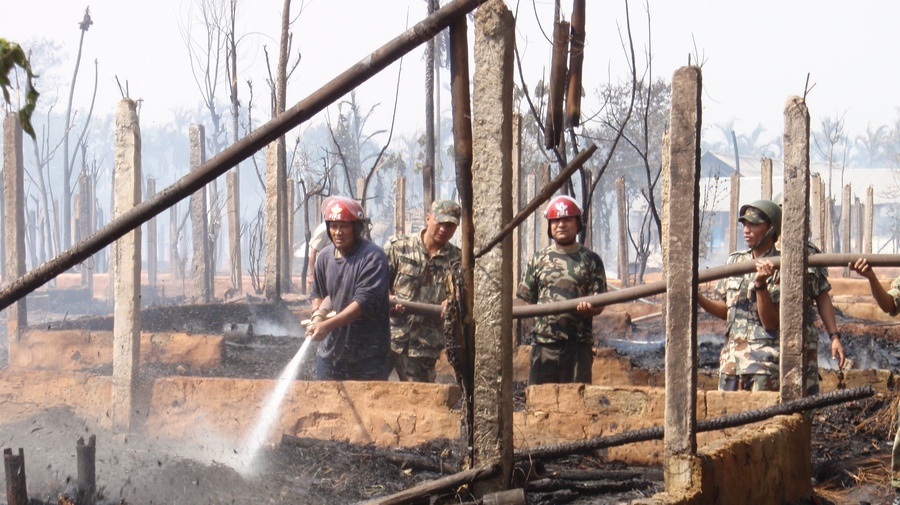
Firefighters tackle the last of the blaze in Goldhap camp.
KATHMANDU, Nepal, March 22 (UNHCR) - Fire swept through two refugee camps in eastern Nepal on Tuesday, destroying some 700 shelters and leaving almost 5,000 people homeless. There were no serious casualties.
"Fire in two camps on the same day is a disaster," said Stephane Jaquemet, UNHCR's representative in Nepal, while adding that the refugee agency was working with the government and other partners to provide shelter and relief to those affected in the Goldhap and Sanischare camps.
An estimated 3,790 of the 4,355 refugees in Goldhap lost their homes and some 1,200 in Sanischare, which has a population of 12,590 refugees. The two camps house refugees originating from Bhutan.
This is not the first time that Goldhap has been ravaged by fire. In March 2008, fire razed 95 per cent of the camp and left most of its 9,770 refugees homeless. "The fire in Goldhap was as big as the one in 2008, engulfing the health centre, school and most other sections," said Jaquemet.
The fire spread rapidly through the closely packed huts, which are made of wood, bamboo and thatch. The cause of the fire is not clear, but an investigation has been opened. Hundreds of policemen and refugees fought the fires in both camps using fire trucks and hoses from nearby towns.
A government-led committee has been set up to coordinate immediate emergency assistance. UNHCR and its partners, including Caritas, Lutheran World Federation, the Association of Medical Doctors of Asia, the World Food Programme and the Nepal Red Cross, have started distributing food, blankets, cooking kits and tarpaulins for shelter.
Fire is a danger in the seven camps in eastern Nepal that house refugees originating from Bhutan, despite prevention and awareness campaigns conducted by the government, UNHCR and its NGO partners. The threat is particularly acute during the current dry season.
By Nini Gurung in Kathmandu, Nepal


